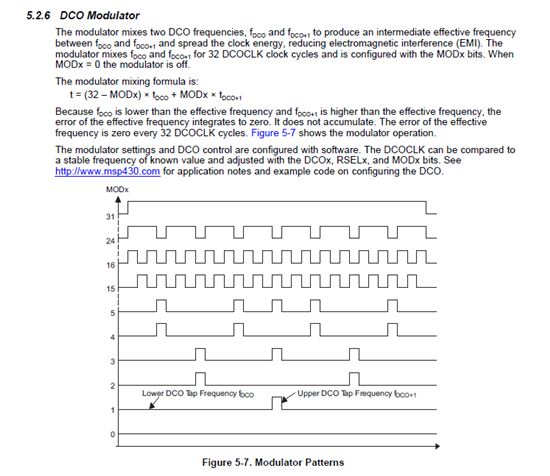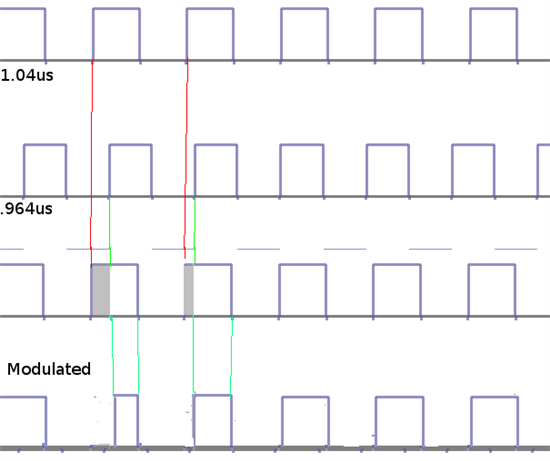Hi Sir,
I am using MSP430g2231 microcontroller to generate a clock frequency of 38kHz in one of the GPIO pin(P1.4).
That means I am trying to generate a clock cycle pulses of period "26micro seconds"(1/38khz). I have used the
configurations and written the code as shown below. The problem that I am facing is, when I am trying to check
the result in oscilloscope the cycle period varies in between 32, 34 and 38 micro seconds. So my question is
what am I doing wrong with my code? Is there any wrong with my clock selection..since I am using calibrated
clock (internal) values of 1Mhz or I am doing wrong in setting values of TimerA CCR0 value? Please provide the
support and help. Thanks.
#include "msp430g2231.h"
void main(void) {
WDTCTL = WDTPW + WDTHOLD; // Stop watchdog timer
if (CALBC1_1MHZ ==0xFF || CALDCO_1MHZ == 0xFF)
{
while(1); // If calibration constants erased
// do not load, trap CPU!!
}
DCOCTL=CALDCO_1MHZ;
BCSCTL1 =CALBC1_1MHZ;
//make Port pin 4 as output*/
P1DIR = BIT4;
P1OUT = 0x00;
configureTimer();
__enable_interrupt();
while(1);
}
/*I am trying to generate each pulse duration 13us*/
void configureTimer()
{
CCR0 = 13-1; // set up terminal count
TA0CTL = TASSEL_2 + ID_0 + MC_1; // SMCLK + SMCLK/1 +up mode
// enable interrupts
CCTL0 = CCIE; // enable timer interrupts
}
//Toggling the pin 1.4
#pragma vector = TIMERA0_VECTOR
__interrupt void Timer_A0_clkgen(void)
{
TA0CCTL0 &= ~CCIFG;
P1OUT ^= BIT4;
}



